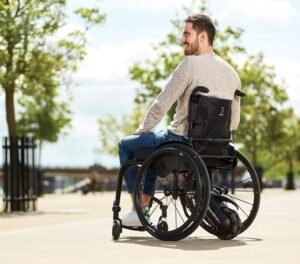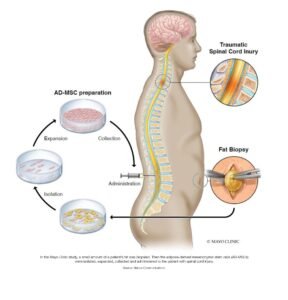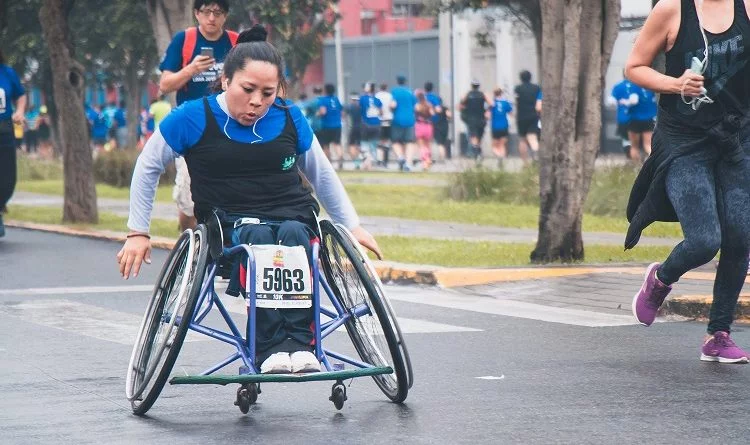For centuries, doctors believed nerve damage was permanent, but research over the past two centuries has shown that both peripheral and central neurons can repair and even regenerate under the right conditions. Advances such as nerve grafts, transfers, and discoveries about neurogenesis have given patients new hope for recovery from injuries once thought untreatable. Today, scientists are working to harness these breakthroughs to treat complex nerve injuries and potentially unlock therapies for neurodegenerative diseases like Alzheimer’s.
Discover how scientists are learning about neurogenesis.
More Info on Spinal Cord Injury Treatments
New treatments for spinal cord injury (SCI) focus on promoting nerve regeneration and improving function, including “dancing molecules” from Northwestern University for acute injuries, stem cell therapies showing safety and potential benefits, a drug called NVG291 that targets growth inhibitors, a neuroprosthetic system combining an implanted device with robotics, and a hydrogel technology to reduce inflammation and activate regeneration. These are promising developments in a field with limited current treatments, and many are in various stages of clinical trials and research.
Regenerative & Molecular Therapies
-
This new Northwestern University therapy uses a one-time injection to deliver molecules that harness movement to reverse paralysis and repair tissues in acute spinal cord injuries, as shown in a study on mice that regained the ability to walk.
-
This drug targets and relieves the blockage caused by growth inhibitors after an injury, enabling the repair of injured nervous tissue and strengthening existing connections to restore movement.
-
Studies show that injecting stem cells, sometimes from a patient’s own body, can improve sensation and strength in muscle groups, and the therapy has demonstrated safety and potential benefits in clinical trials.
-
Researchers are developing composite hydrogels that can reduce inflammation, promote endogenous regeneration of the spinal cord, and restore motor function in preclinical models.
Surgical & Electrical Stimulations
-
NeuroRestore has developed a technology that combines an implanted spinal cord neuroprosthesis with rehabilitation robotics to restore movement.
-
One patient showed improvement in mood, fine motor skills, and overall function during and after spinal cord stimulation therapy, even when the stimulator was off.
Other Promising Avenues
-
A world-first human trial uses specialized nasal cells to form nerve bridges, which are then implanted into the spinal cord to repair damage and regenerate nerve cells.
-
A recent trial showed improved movement in animals with spinal cord injuries after daily exposure to electric fields.
This is for informational purposes only. For medical advice or diagnosis, consult a professional. AI responses may include mistakes. Learn more







